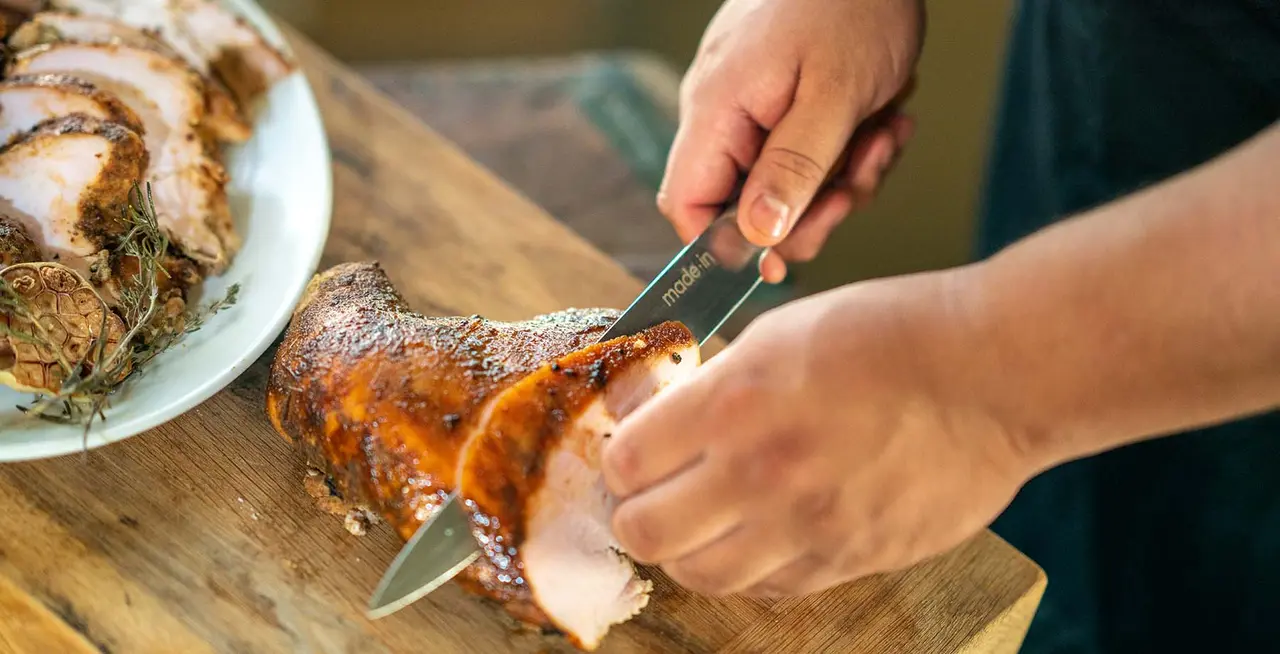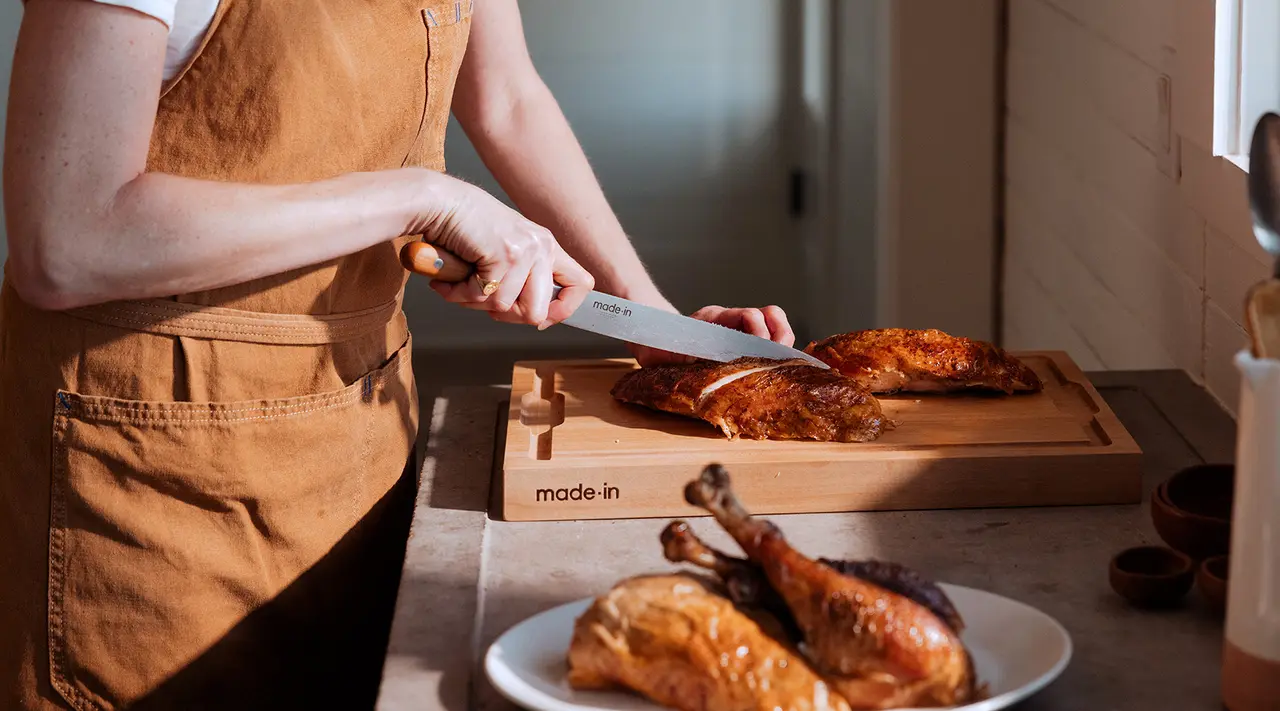How you cook a protein like steak or turkey will dictate about 90% of how it tastes. The final 10%, which is often overlooked, comes from how, when, and with what you slice it. When all aspects are done with the same degree of care, you can fully enjoy the fruits of your labor.
There are a few types of kitchen knives that work well when cutting pork chops, chicken breast, steak, and other types of meat, but the most important thing is using a sharp knife. While a sharp knife slices cleanly through, a dull one will result in the juices ending up all over your cutting board instead of in the meat where they belong. This will leave you with a rubbery, tasteless protein rather than a juicy, flavorful one, no matter how perfectly you’ve cooked it.
Here, we break down some of our favorite knives for cutting meat. Discover the best blades for the job, along with the proper way to slice up a fillet, chop, or breast while ensuring knife safety.
What are the Best Knives for Cutting Meat?

While any sharp knife can be used to cut meat, some shapes are better suited than others. Here are our top three picks for the next time you’re carving a roast or slicing a steak.
Our Favorite: Carving Knife
As the name implies, carving knives are used for roasts, like turkey, chicken, prime rib, or other large cut of meat. A narrow blade allows you to work around bones with ease, and a distinctive long blade also provides clean, uniform cuts of any thickness, from thin deli -style slices to thicker ones.
Most Versatile: Chef Knife
Heralded as an almost all-purpose knife by professional and home cooks alike, our Chef Knife is also an excellent choice for cutting meat. Unlike a carving knife, chef knives have longer and considerably wider blades that can be used to cut anything from chicken to steak to pork chops, either cooked or raw.
Best for Crispy Skin: Bread Knife
Similar to the Carving Knife, our Bread Knife has a long, somewhat narrow blade. However, what sets it apart is its serrated blade. Specially designed with 24 evenly spaced points (or “teeth”), this knife is designed for slicing through bread while keeping its crust and interior intact. This also makes it ideal for cutting through crispy chicken skin without it crumbling all over the place.
Best for Prep: Boning Knife and Cleaver
Before you even start cooking, you sometimes need to debone or break down a larger cut (like a whole chicken or larger roast). If that's the case, our #1 choice for easy deboning is the Boning Knife, while our Cleaver makes quick work of whole animal butchery (or even for prepping large sides, like kabocha squash). Our Boning Knife features a long, flexible blade, ideal for separating bone and cartilage without leaving any meat behind.
Which One Is the Best?
While all of these knives will get your meat sliced and on your plate, we recommend the carving knife most of all. It's specifically designed for the purpose of cutting meat, and therefore gives you unmatched control and precision. It's a must-have if you're a regular host during the holidays, or if you're frequently cooking and carving meat.
How to Slice Meat

Regardless of what knife you choose, it is essential to let your meat rest prior to slicing it. This allows the juices to redistribute throughout the meat, where if you cut your meat right away, you’ll lose all those juices to your cutting board and be left with dried out meat.
In order to avoid that, let your steak, chop, or chicken breast rest for 5–10 minutes before cutting it. If it’s a whole bird, let it sit for 30–45 minutes. Additionally, make sure you’re slicing your meat against the grain. This ensures that each slice is tender instead of unpleasantly chewy.
Ready to Shop?
With all the work that's put in to cooking the perfect holiday roast, date-night steak, or weeknight chicken, you're doing yourself a disservice by slicing it with a dull knife. Shop our selection of French-made, fully forged, and full-tang Knives and serve each protein with the care and respect it deserves.


























